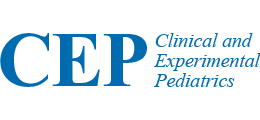All issues > Volume 30(12); 1987
- Original Article
- J Korean Pediatr Soc. 1987;30(12):1409-1418. Published online December 31, 1987.
- Clinical Bacteriologic Study of Serratia Marcescens Septicemia.
- Hyo Sook Hong1, Wan Seob Kim1, Oh Kyung Lee1, Myung Ho Lee1
- 1Department of Pediatrics. Chonju Presbyterian Medical Center
- Abstract
- We experienced an outbreak of Serratia marcescens septicemia during a 2-month-10-day period
(Apirl the 10th, 1985-June the 6th, 1985) in the Chonju Presbyterian medical center, pediatric ward.
The clinical and bacteriological features of 22 patients with septicemia were described.
There were 25 bacterial isolates from 22 patients. Twenty cases of 22 patients recovered, while 2
patients died, both premature infants. This indicated the seriousness of the outbreak.
Analysis of this experience confirmed the importance of factors associated with Serratia infection:
1) Age Twelve cases (54%) occured in neonates.
2) Immunosuppressive therapy or immunocompromise of the host.
There were three cases in immunocompromised patients over the age of three years; all were
receiving immunosuppressive therapy.
The organisms isolated were resistant to many antibiotics including ampicillin, carbenicillin,
cephalothin, tetracycline, gentamicin and kanamycin. Nevertheless, they were most sensitive to
amikacin, chrolamphenicol, moxalactam, cefotaxim and cefobid.
Environmental surveys incriminated contaminated intravenous fluids as the “common source”.
Complete termination of the outbreak took place after control measures were instituted.
This report demonstrates that intravenous therapy may be associated with an increased risk of
life-threatening septicemia.
Keywords :Serratia marcescens septicemia

 About
About Browse articles
Browse articles For contributors
For contributors
